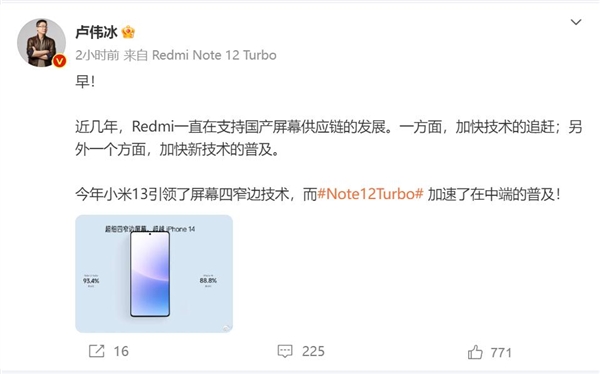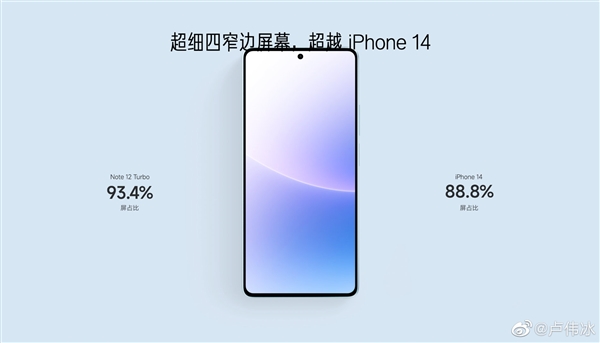Lu Weibing of Xiaomi Group said in a post that Redmi has been supporting the development of the domestic screen supply chain in recent years. On the one hand, speed up the technological catch-up; Another aspect is to accelerate the spread of new technology. This year the Mi 13 led the way in four-sided screen technology, while the Redmi Note 12 Turbo accelerated adoption in the mid-range. By the way, MI 13 Ultra will be released in April.

This time, the Redmi Note 12 Turbo eliminates the plastic screen bracket, and the screen adopts COP packaging technology. By taking advantage of flexible OLED’s bendable characteristics, a part of the screen is bent and then packaged, and the screen cable and IC chip are integrated under the screen, finally achieve a 2.22mm ultra-narrow chin. Narrower than the iPhone 14, which is 2.4mm.

The Redmi Note 12 Turbo also has an extremely narrow left and right bezel of 1.42mm, which makes up 93.4% of the screen, compared with 88.8% on the iPhone 14.
In terms of parameters, the Redmi Note 12 Turbo is powered by the second-generation Snapdragon 7+ chip and uses the same technology architecture as Snapdragon 8+. The Qualcomm Kryo CPU of the second generation Snapdragon 7+ has a maximum CPU frequency of 2.91GHz, which improves performance by more than 50%. Meanwhile, the performance of Qualcomm AdrenoGPU is increased by 2 times. The second-generation Snapdragon 7+ also achieved an overall system energy efficiency improvement of up to 13%.
The starting price of this machine is 1999 yuan.










